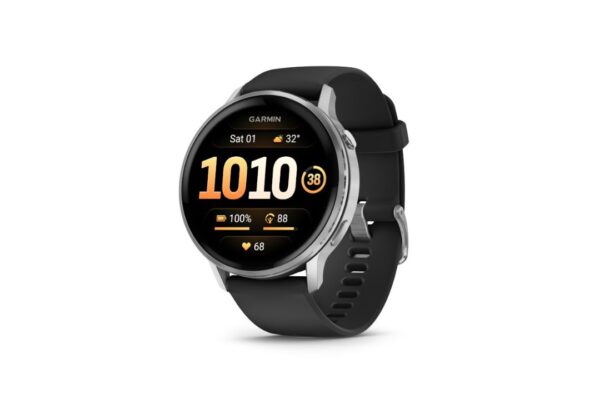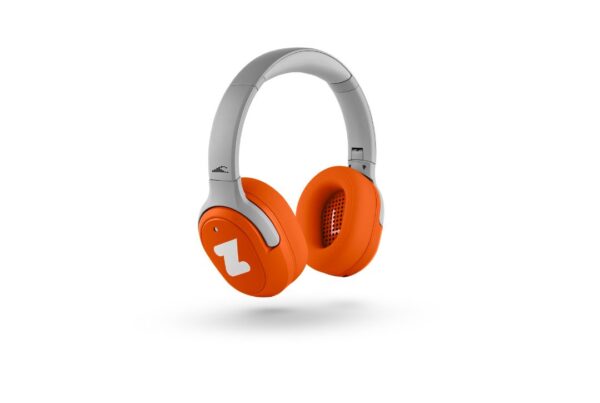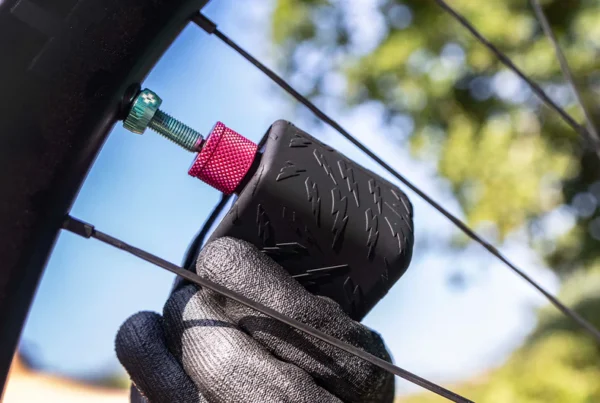The Zwift Ride was launched in June 2024 and was Zwift’s first offering in the field of smart bikes. Their objective was to provide a cost-effective solution that would allow people easy access to their immersive platform.
The Zwift Ride isn’t a smart bike like what has been previously offered by Wahoo, Tacx or Wattbike. These were fully integrated systems built around their own hardware. The Zwift Ride is effectively a frame that could be bought with or without the Wahoo KICKR Core smart trainer. This means that if you already had a smart trainer with the Zwift Cog, you could simply purchase the frame, making it even more cost-effective and allowing you to free up the bike that you had attached to the trainer.
Fundamentally, the Ride is a bike frame, connected to a smart trainer, utilising the Zwift Cog and a refined version of their Zwift Play controllers. It combines all of Zwift’s hardware offerings into one neat package that basically makes it easier for people to start their journey on Zwift.
Ultimately, Zwift is a subscription-based business and this significantly lowers the barrier to entry for new users to join the platform and to start enjoying indoor cycling.
To keep things updated, in September 2025, Zwift announced that the Zwift Ride Smart Bike will now come with the all-new Wahoo KICKR Core 2.
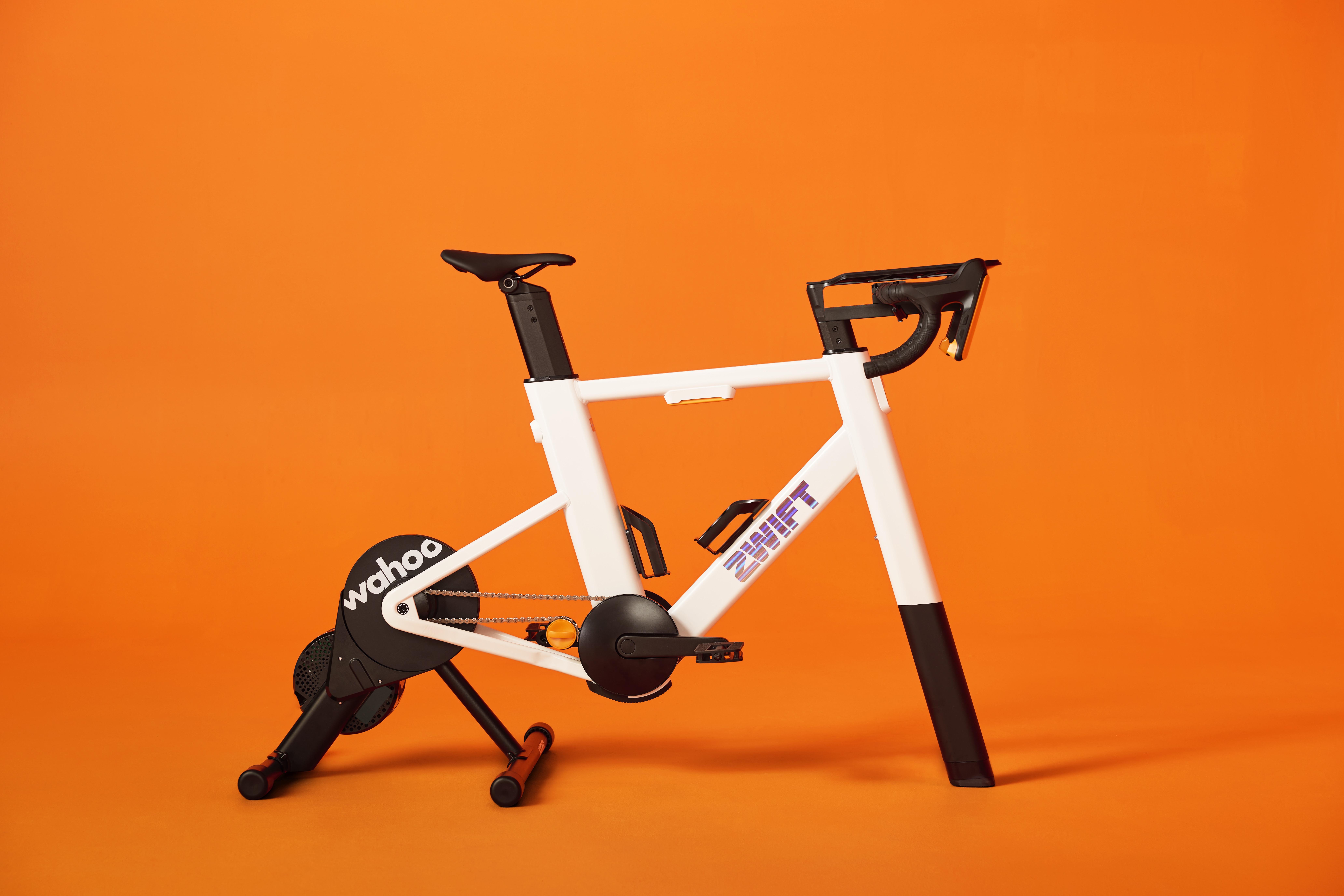
Design and build quality
The frame is made from steel and is powder-coated white. This was a strategic choice, with Meir Machlin, VP of Engineering at Zwift, who has been at the forefront of the development of the product, confirming that after conducting market research, their Industrial Designers highlighted that white would be the most suitable colour to use, providing a clean and simple look. In fact Zwift did a lot of research and found that white was the preference amongst their panel groups. White was selected because it blends in more naturally within a home environment. Traditionally, bikes have been created more with gym spaces in mind, so this was the opposite.
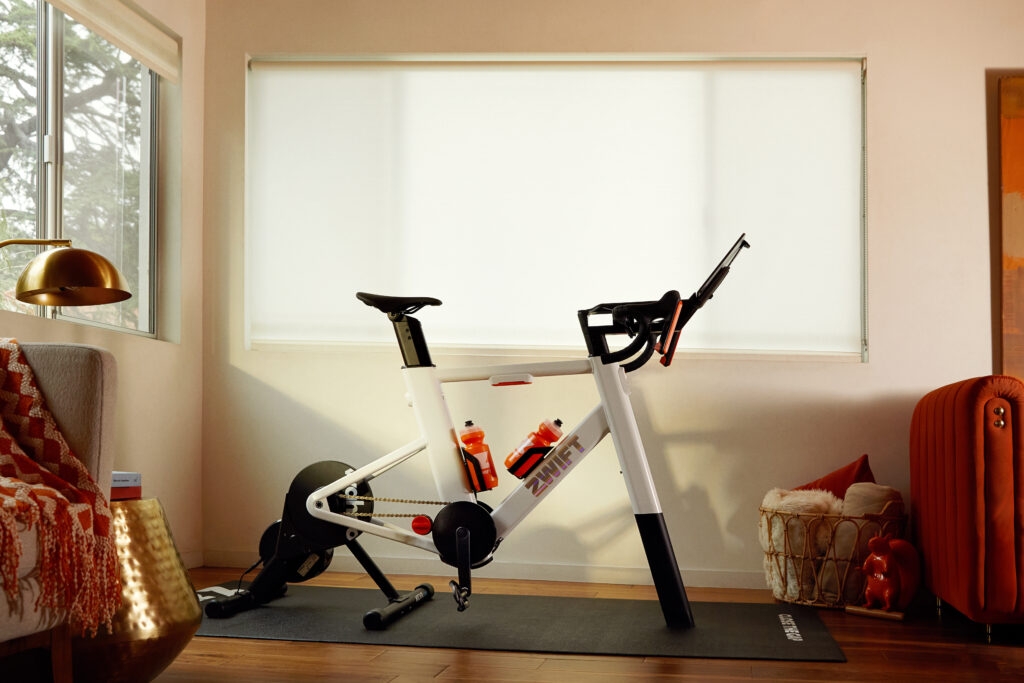
Steel was selected as the material to manufacture the product from as it was a less expensive choice, enabling manufacturing costs to be reduced, meaning that the product could be kept at an affordable price point. Consequently, the frame is very sturdy but heavy (17kg), but fortunately, this isn’t an item that you move around.
On a recent tour of Zwift’s Design Studio, Meir was able to show me how the Ride had evolved, providing details of how the build was refined to produce a polished look, including how attention was paid to the smoothing of the joins at key points on the frame, thus ensuring the design was aesthetically pleasing.
The solid front fork, complete with rubber pad, referred to as the “front leg”, provides a solid base that ensures, when the frame is connected to the smart trainer, the platform is very stable. The absence of the front wheel means this simple design reduces the overall footprint of the setup in comparison to having your bike connected, and it noticeably takes up less space.
The Bluetooth handlebars underwent multiple design iterations before Zwift landed on a solution that effectively combines a normal road bike setup with their Play controllers. This allows you to navigate Zwift’s in-game menus without taking your hands off the handlebars. Again, a clean, uncomplicated look was desired and achieved. Meir explained that the handlebars are manufactured in China and that the handlebar tape is hand-wrapped by mechanics, taking only 3 minutes!
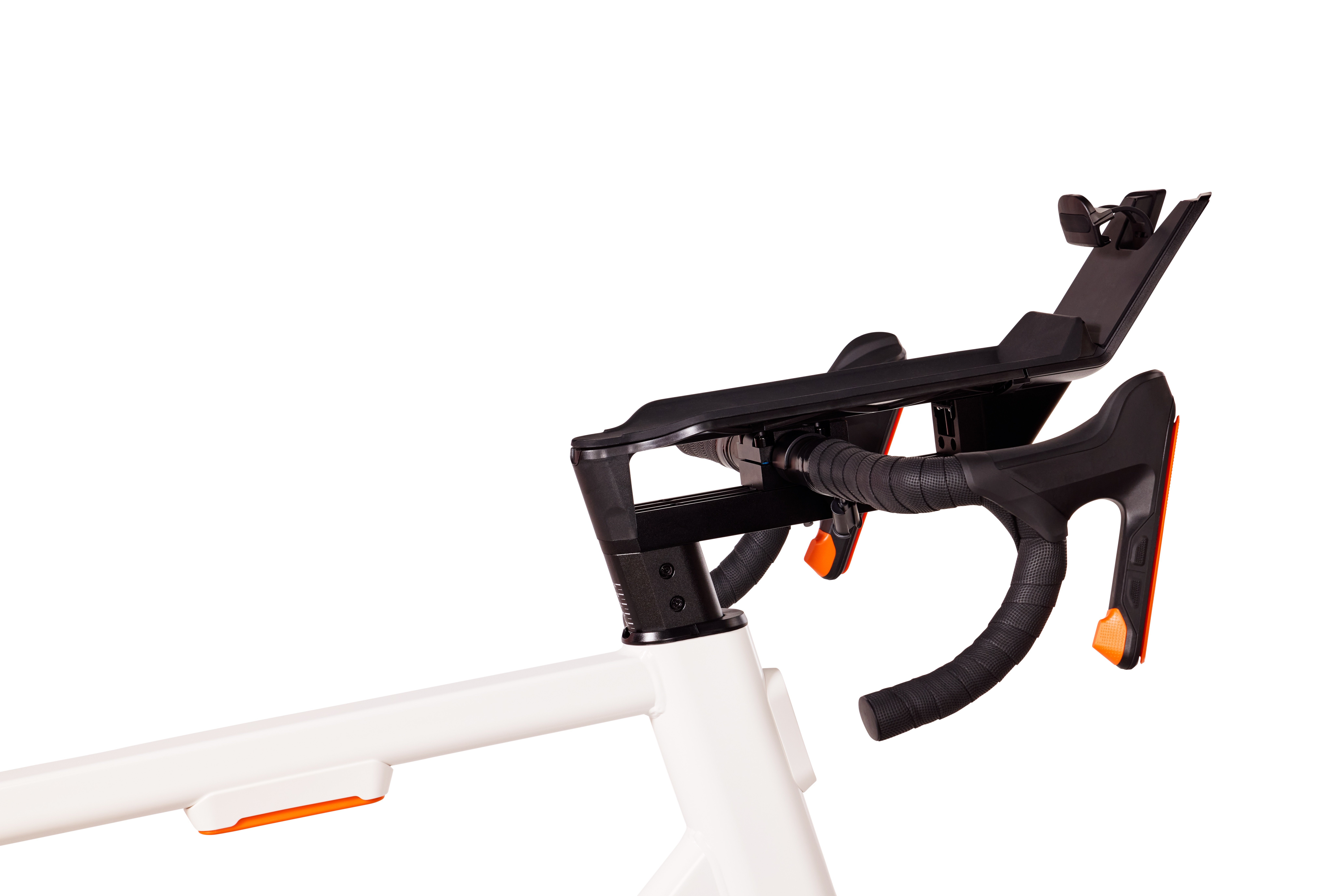
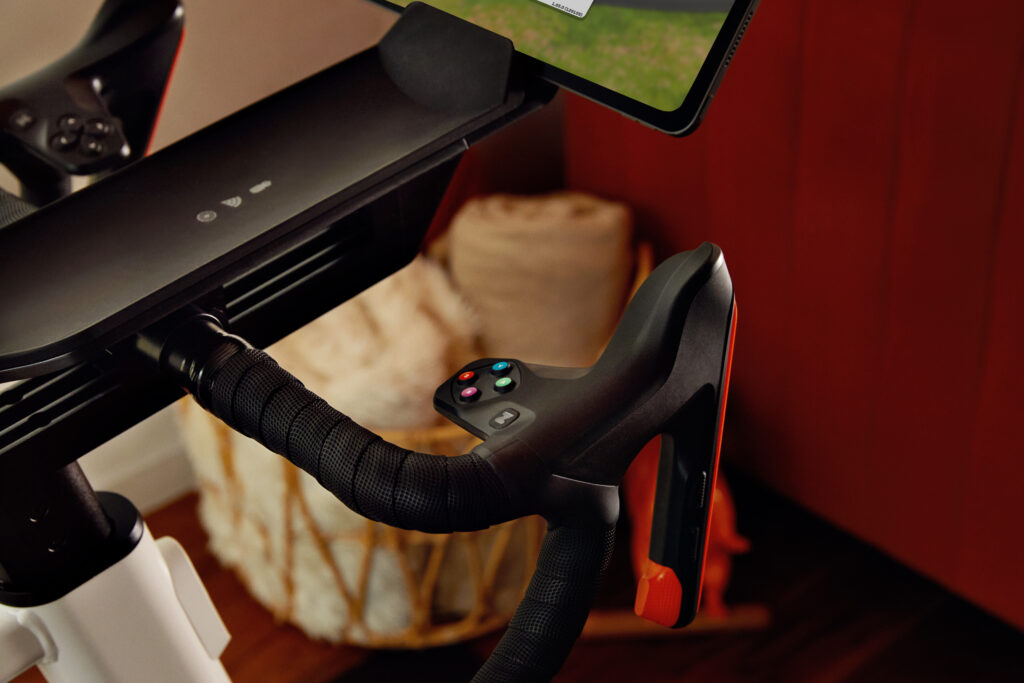
The Ride has been designed so that the seat and handlebars can be easily adjustable so it can be utilised by multiple users.
The seat moves up and down and the handlebars move fore/aft. To ensure you achieve the optimal setup for your size, Zwift have included instructional cards which translate your height and reach to corresponding letters that are on the saddle and handlebar position.
Both can be easily changed using an 6mm Allen key / Hex wrench that comes supplied and is held neatly in place under the top frame, via magnets. Upon closer inspection, you will note the phrase “SWEAT THE DETAILS”, which is appropriate as from the outset, it is clear that the Design team have carefully considered all details of this product.
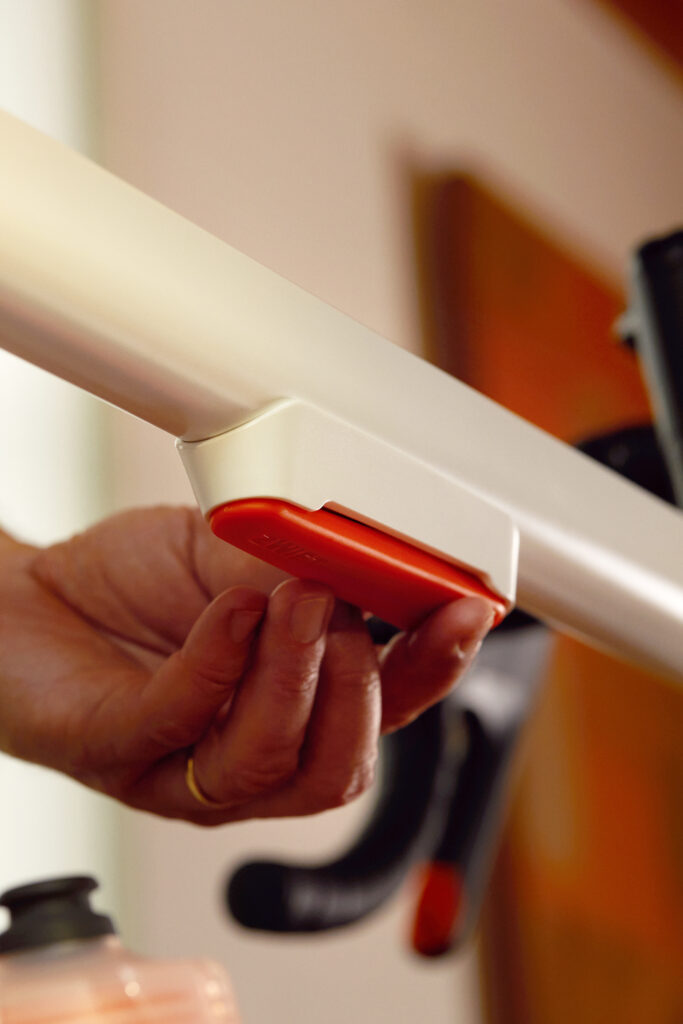
To complete the design, Zwift included two essential bottle holders, and a small centre platform, complete with a silicone mat. This provides a place you can rest your phone on, although you might want to put a towel over it because I did find it acted like a bit of a sweat catcher.
The Ride is designed to be used in conjunction with the Zwift Cog which is an ingenious device used to tension and un-tension the chain, making it easy to position the Ride onto the trainer, securing it in place with a thru-axle.
The overall design is clean and very functional with excellent attention to detail, including a classy Zwift hologram on the downtube and a rubber cushion on the underneath of the frame so you can rest it on the floor whilst you position it on the trainer.
Setting up
The Ride, if purchased with the Wahoo KICKR Core, comes in three boxes (as of September 2025, it will come with the new updated KICKR Core 2). One for the handlebars, one for the frame and one for the smart trainer. Zwift provides a QR code that takes you to an instructional video that can be viewed here. However, the Zwift Ride is very intuitive to set up.
Once you have secured the Ride frame onto your smart trainer, which is done by using the chain tensioner and un-tensioner as mentioned above and securing it using the thru-axel, you can then begin assembly. As I found the frame quite heavy to manoeuvre, you might consider getting someone to help, as it can be tricky.
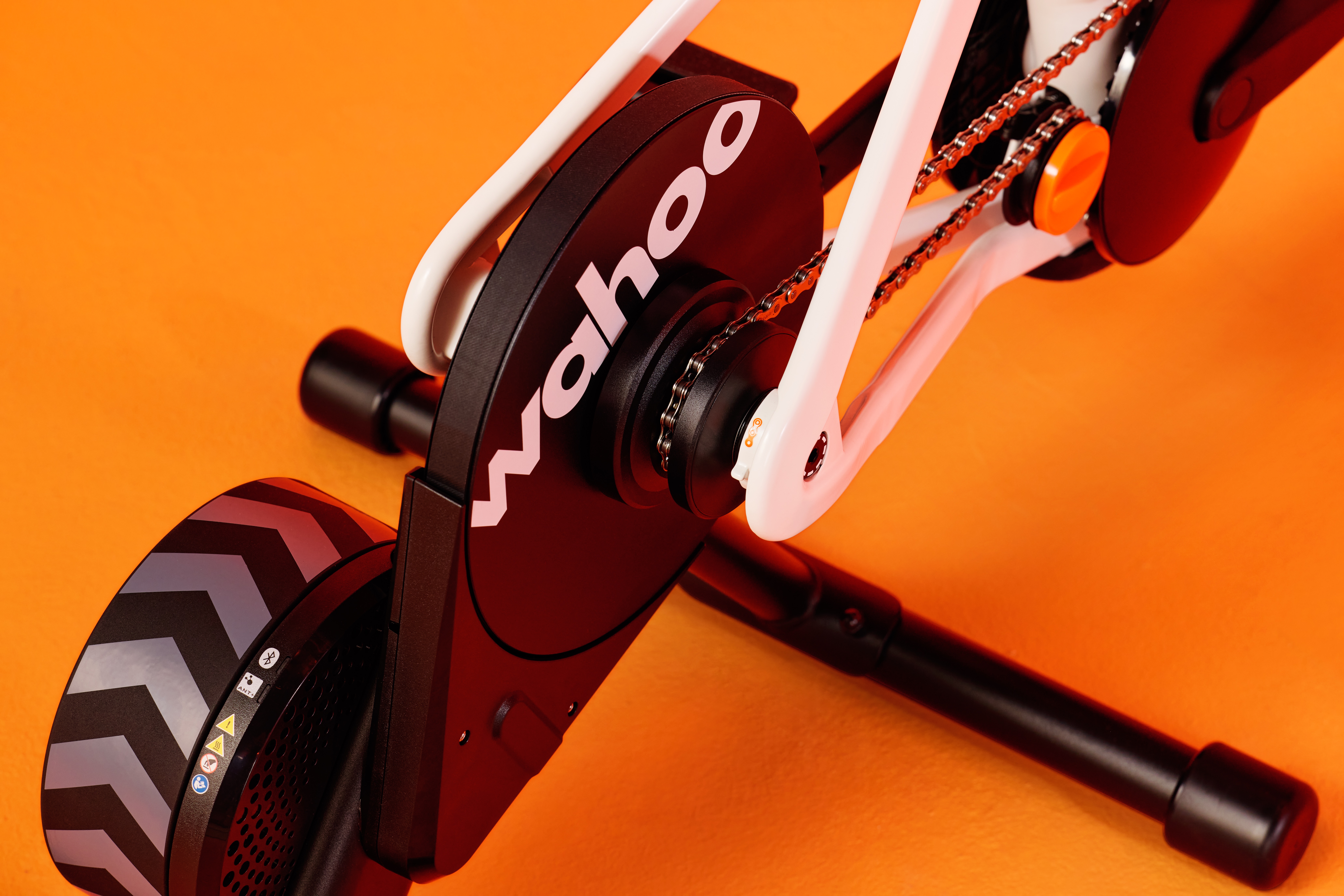

Zwift have supplied a generic set of flat pedals, so if you buy the Zwift Ride complete with the KICKR Core / Core 2, then you will have everything you need to start riding.
With the frame secured on your trainer, next, slide the seat post into the frame and secure using the supplied 6mm Allen key / Hex wrench, followed by the handlebars. The height of the handlebars is locked into position by tightening a screw located at the very front of the frame.


Once the height has been adjusted, you will need to adjust the reach. To help with these dimensions, as noted earlier, Zwift has supplied instructional cards that translate the letters found on the handlebars (and seat post) to measurements based on your size.
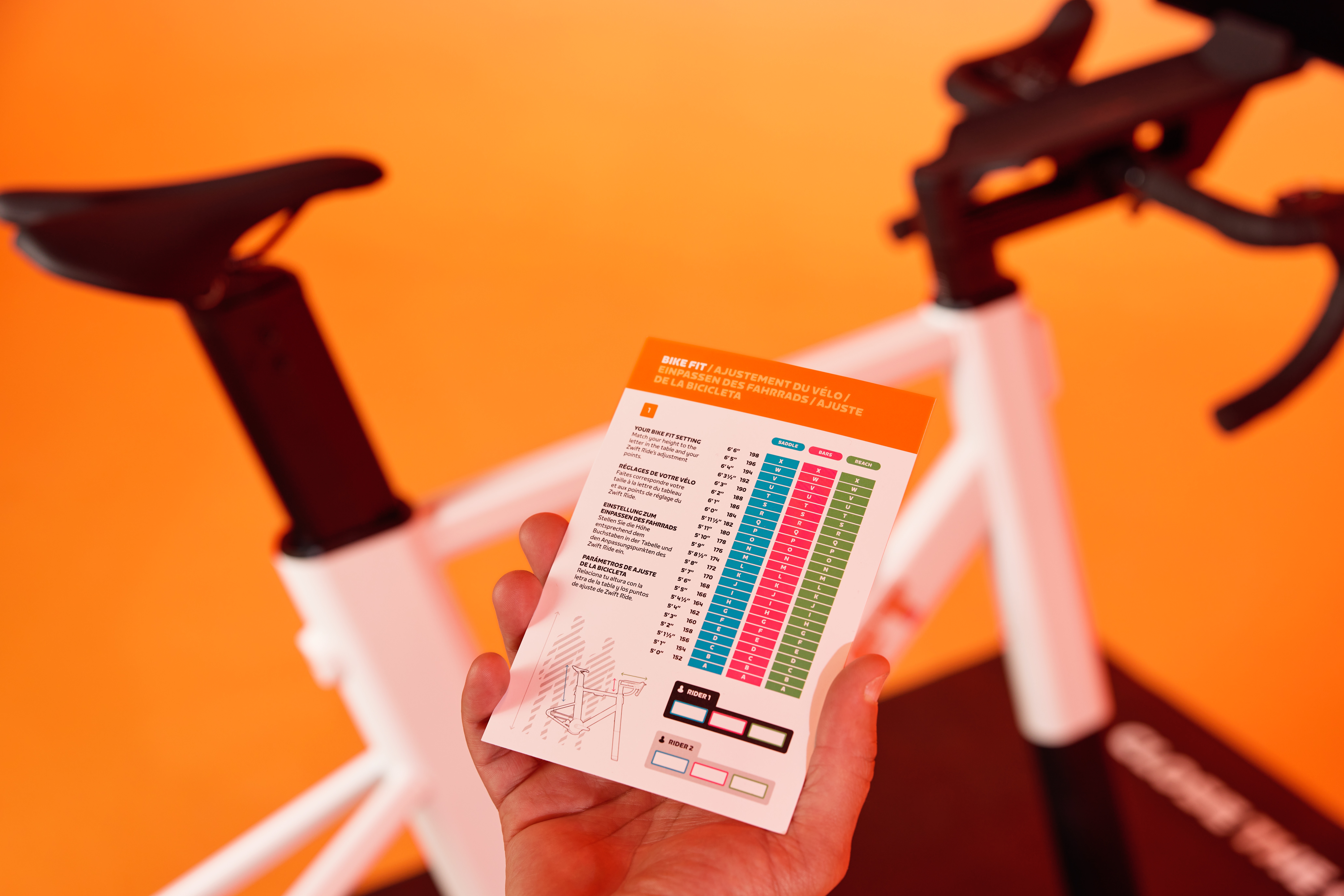
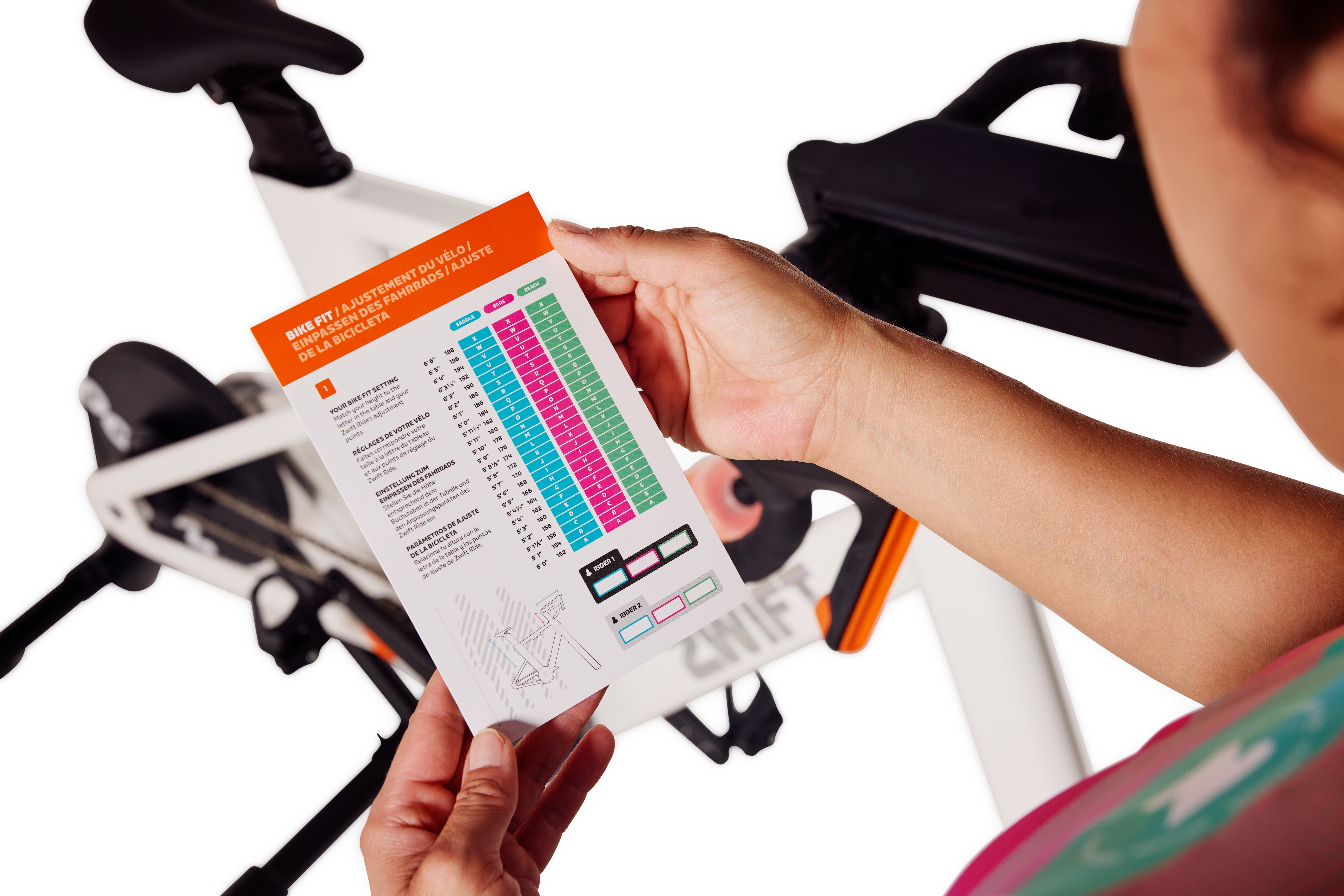
Once you have positioned the handlebars (which slide horizontally), ensure the silicone mat is put in place to cover the bolt. which you can use to hold your accessories like your phone. As this will be the first time you will be using the Ride, you may need to adjust the handlebars, which come with appropriate USB charging wires. You may also want to tweak the position of the saddle, forward or back, to fine tune your position.


Fundamentally, there are only four adjustment points:
- Saddle height
- Handlebar height
- Saddle position, forward, back, tilt
- Handlebar position, forward, back
Overall, I found setting up the Zwift Ride to be very intuitive and even if you don’t follow the instructional videos, it’s hard to go wrong.
Adjustability
As documented, the Ride can be easily adjusted to fit any rider. Zwift has noted that it is compatible with people from 5′ (152 cm) to 6′ 6″ (198 cm) tall. Zwift has advised that there is a weight limit of 265 lbs / 120 kilograms.
There is a front leg riser foot included for trainer height alignment, should you require it.
170mm cranks come installed. However, Zwift have released some adjustable crank arms that can be purchased and installed. As Zwift notes, “this optional upgrade lets you choose from five crank lengths (160 mm, 165 mm, 170 mm, 172.5 mm, 175 mm) for a more tailored fit.”
With this amount of adjustability, you can completely fine tune and achieve the optimum setup.

Compatibility
Since the release of the Zwift Ride in June 2024, many smart trainers are now compatible with the Zwift Cog, meaning that the Ride will work with the leading smart trainers. Wahoo’s KICKR Core / Core 2 comes shipped with the Ride and their other models are also compatible. Other trainers are also compatible with the Zwift Ride, including Elite’s top trainers such as the Justo 2, Justo and Direto XR. Most recently Garmin have announced that the Zwift Cog is compatible with the Tacx NEO 2 and 2T.
It is not compatible with the Tacx 3M as there is no room for the rear axle.
Basically, it is compatible with most Zwift Ready trainers (besides the 3M), meaning you don’t have to have a trainer with a Cog already. The Frame upgrade will come with a Cog for you to put on the trainer, installed on the right freehub already.
In addition to using the Ride with the Zwift online platform, the virtual gearing now works with ROUVY. These are the two major platforms where the Zwift Ride can be utilised.
Technical Specs – Frameset
Details about the frameset are as follows.
High level details
• Weight: 17kg
• Controller battery life: 20 hours
• Frame finish: White. Powder Coated
• Frame material: Steel
• Q-Factor: 150mm (The Q-factor on a Zwift frame refers to the distance between the outer edges of the two crank arms, measured laterally).
Rider sizing details
• Rider Fit Range: 152 – 198 cm
• Saddle Height Min-Max: 59.9 cm – 86.5cm (centre bottom bracket to top of saddle)
• Stepover Height: 76.4 cm
• Max Rider Weight: The weight limit stated is actually a weight limit stipulated by the trainer itself. In reality, the frame could be rated higher but we didn’t test beyond the claimed limits of the trainer.
• Crank Length: 170mm
Product dimensions and frame specs
• Product Dimensions: 136 cm L x 58 cm W
• Drivetrain: Chain
• Pedals: Flat Included (compatible with standard road and mountain pedals)
• Saddle: 160mm W x 245mm L
Additional handlebar specs
• Handlebar Height Min-Max: 86.3 – 102.4 cm
• Handlebar Width: 42 cm (centre to centre)
• Integrated rechargeable controllers with 20 hrs. per charge
• Handlebar Controller Power: Built-in rechargeable lithium-ion battery (1050 mAH)
• Handlebar Controller Power requirements: USB-A, 5v, 1A
Key Features
Handlebars – Zwift have taken the functionality of the Zwift Play controllers that I have previously reviewed here, and built handlebars around them. The functionality of the handlebars is nearly identical to the Zwift Play controllers, but with two extra orange buttons on the shifters that give “Ride Ons” and allow the powerup to be utilised. The configuration of virtual shifting is addressed in-game.
Having got used to virtual shifting using the Zwift Play controllers, I have now become accustomed to how easy it is to adjust your gearing, maximising your power and keeping at a comfortable cadence.

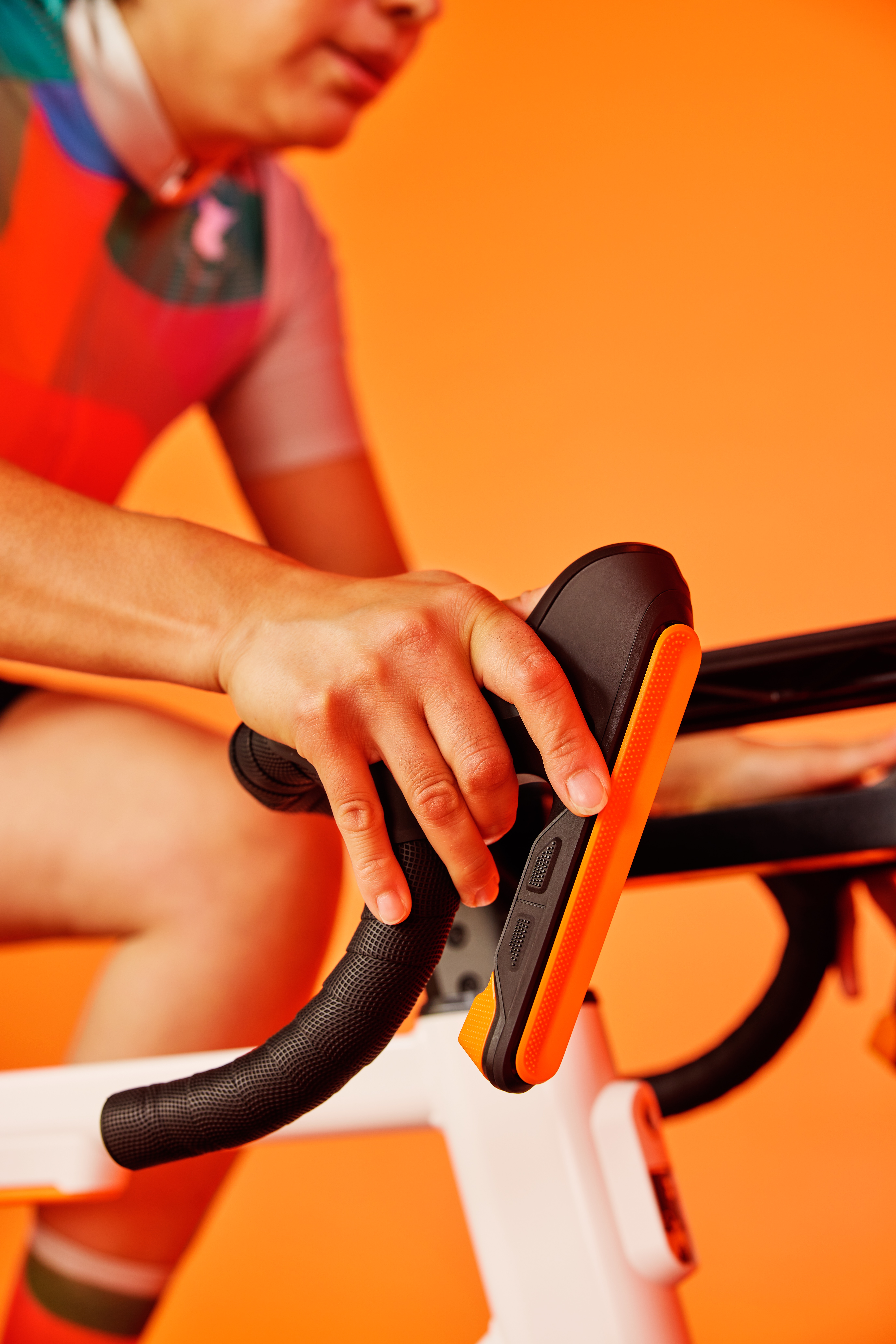
Chain guard – There is a chain guard to stop the chain slipping from the cog.
Pedals – The Ride comes with a pair of flat pedals. They are simple, normal pedals, ideal if you are just starting or if they are going to be used by everyone in the household. They are straightforward to install, allowing you to use the Ride straight out of the box. If you do use clip in pedals, I would recommend getting a new, basic set. I use Look KEO pedals, so was able to pick up an inexpensive pair that I installed.
Saddle – The saddle was a little hard for my liking. However, I appreciate this is purely a personal preference and is easily changeable. Note that I am quite particular about my choice of saddle! Interestingly, Zwift showed different designs of saddle that they tested, including having one with a huge white “Z” stitched in, which looked rather fancy, but that came with additional cost, so this was dropped. Instead, a simple black designed saddle was used, keeping things affordable.
Drink bottle holders – the two drink bottles don’t have the normal clip that holds your water bottle securely, there is no need, and it allows for easy access. This is by design because the bike is stationary. The usual clips are not required as their normal function is to stop the bottles falling out when cycling over bumps.
Tablet holder – Zwift sells an after-market tablet holder that can be attached to the end of the handlebars. This is purchased separately and, as Zwift notes, allows you to keep “your training space compact and organized.” This is a good addition if space is a premium.
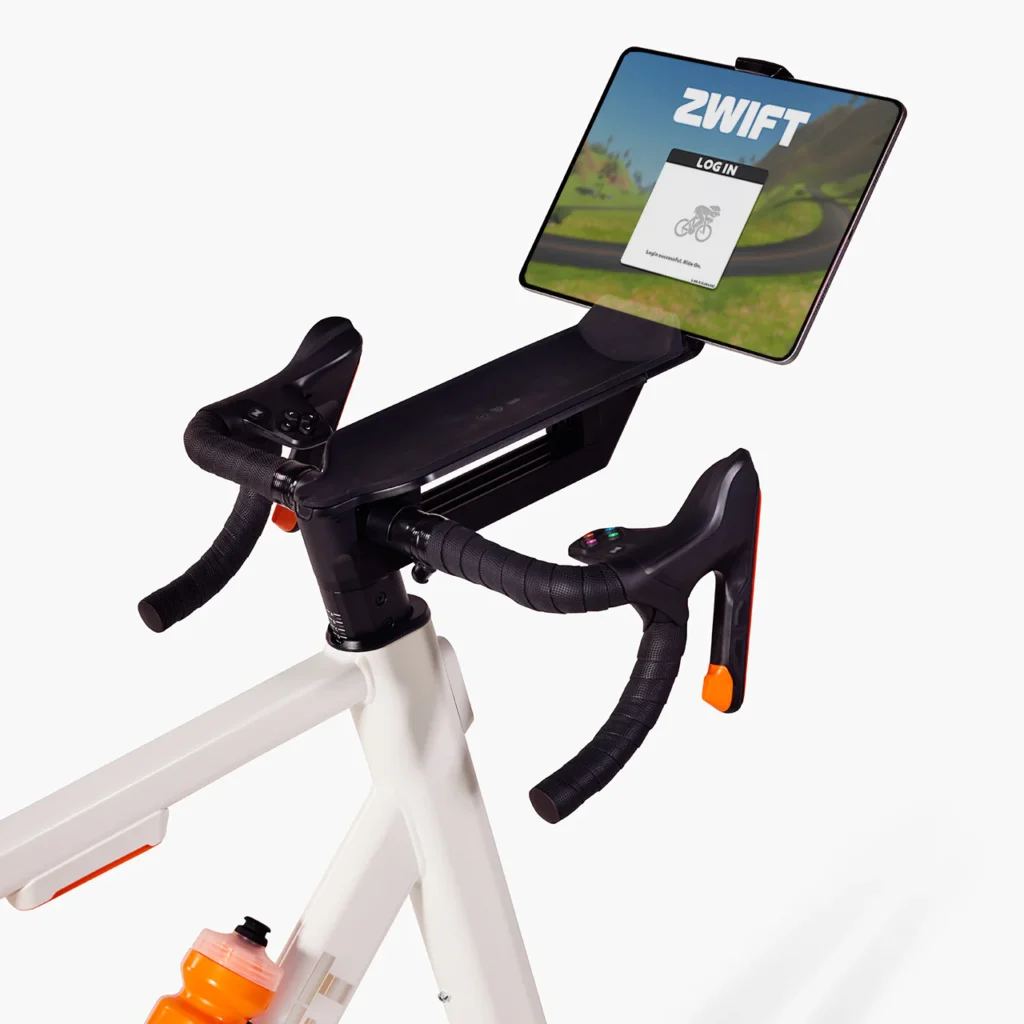
Ride experience
The ride is very stable. Whether you are out of the saddle pushing big watts in a sprint or simply “dancing on the pedals” as you climb Alpe Du Zwift, the Ride is a stable platform. And because it is connected to a smart trainer, there is an appropriate “give” to not cause any injuries. I had firsthand experience testing a competitor platform where its rigidity caused me to suffer from a sore back. My only minor complaint with regard to the Ride experience was that I found the saddle rather hard.
The bottle cages held my bottles in place were well-designed allowing for easy access. The accessory holder was useful, although I had previously mentioned it acted as a bit of a sweat catcher, but that was easily fixed by draping my towel over my phone.
I didn’t have an issue with the shorter crank length of 170mm. I am used to riding at 172.5mm and simply raised the saddle a fraction to accommodate. I may look at switching to the adjustable cranks at some point if I start noticing any discomfort.
The Ride is effectively a bike frame connected to a smart trainer, so the experience is as similar to having your own bike connected as you can get. This has the benefit of allowing you to keep your bike free and ready for riding outdoors.
Cost
The Zwift Frame comes bundled with the new KICKR Core 2 smart trainer, but it can be purchased separately, apart from in Canada. Prices are as follows and exclude shipping, which has to be added accordingly. Sadly, there is no free delivery option.
• €1199.99 – Zwift Ride with KICKR Core 2 / €799.99 – Zwift Ride Smart Frame only
• US $1299.99 – Zwift Ride with KICKR Core 2 /US $799.99 – Zwift Ride Smart Frame only
• £1099.99 – Zwift Ride with KICKR Core 2 / £749.99 – Zwift Ride Smart Frame only
• CAD $1,999.99 Zwift Ride with KICKR Core 2 only available
Purchasing a Zwift Ride can only be done through Zwift and can be done by clicking the following link here.
Summing up
So, if you want to enter the emerging world of indoor cycling, you won’t go wrong with purchasing the Zwift Ride, complete with Wahoo KICKR Core 2. And for those who already have a smart trainer using Zwift, you may want to consider changing your set-up because it will free-up the bike that you have currently attached to your trainer. The Zwift Ride is notably cleaner in appearance than having a bike attached to the trainer and if you are short of space, it saves on that too.
The Zwift Ride offers an innovative entry point into the world of indoor cycling, combining a sturdy steel frame with smart trainer compatibility. Its thoughtful design and adjustability make it accessible for a wide range of riders, ensuring that anyone can embark on their cycling journey with ease.
For more information about the Zwift Ride, visit Zwift’s website by clicking here.

